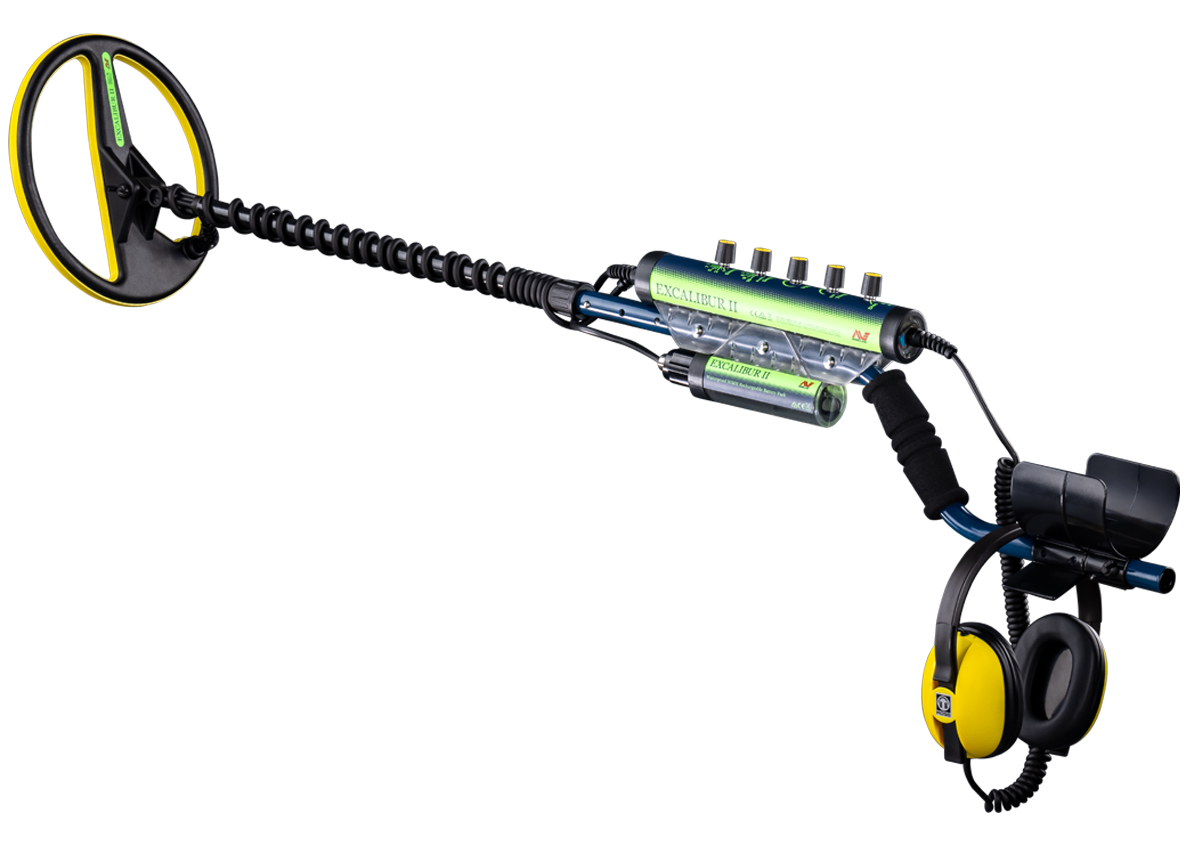Would you ever dream of taking your expensive top of the line metal detector into the water with you? Probably not…it would be a crazy thing to do. But, it wouldn’t be at all out of place if you owned an Excalibur II waterproof underwater metal detector.
I do it frequently…take my Excalibur into the water and enjoy a few hours water hunting and reach areas and things I can’t access on land or the beach for that matter! It’s an absolute great feeling to don the headphones and wade into water with an Excalibur ‘buzzing’ at your side, and best of all is drop the entire thing…yes, even the headphones into the water if you want to recover something or even have a chat with a fellow water hunter as you both bob gently with the motion of the waves!
Even if it’s raining the detector will still soldier on and stay out in the wet as long as you will without any complaints. That, I would not do with a land detector. Even the thought of getting my land detector wet even by accident is enough to keep me awake at night!
The Excalibur models are really a great choice for detecting in and around areas where the detector is going to get wet. They are a solid-built detector and for that very reason they can withstand pressure and operate at 200 feet deep...not that you and I are commercial divers and will go to those depths but, still it is good to know.

For basic water wading chest high it is extremely rugged and the detector can be “hip-mounted” or worn around the neck on a brace or used with the new accessory to mount the tube sideways to the shaft which makes for smoother movement through the waves.
They come with either an 8” or 10” Double-D coils which become buoyant once submerged. The Excalibur ll even has reflective coil strips and bright yellow coil covers to make them even more visible while submerged working in murky waters.
One of the best features of the Excalibur II is the variable tone feature which can actually give 17 different tones and each tone can match the particular conductivity of targets and after a short learning curve it is possible to predict what targets ‘might be’ before recovering them? What do I mean by that you might ask? Well, it gets even better than that. The actual sounds the detector makes is quite unique to the BBS (Broad Band Spectrum) series of detectors, including the Sovereign series which essentially share the exact same circuitry. The sounds can even be categorized into a few different elements of sound as the length of the signal will give important clues – the longer the sound the larger the object, the shorter the sound the smaller the target.
The pitch of the sound gives the best information – from low to medium to high. In fact, some searchers ignore certain sounds and recover just those they know to be targets of a particular band of conductivity say for example, medium to low sounds that could be gold jewelry items. This is a good tactic when time is short or the recoveries are difficult in choppy seas or, there is competition around! The tone of the pitch can also give clues to target identity as certain targets will cause a “buzzing” tone while others will give straightforward “beeps”. I particularly favor the buzz sounds knowing these might be the gold rings…that lazy long round sounding buzz sound…great!
Finally, there’s the volume of the target signal: low volume can indicate a deep target and high volume can indicate shallow items.
A good tip after being in the sea is to stand the detector under a tap and rinse off the salt thus preventing the shafts getting stuck together from dried salt.
So, which sounds and settings do you favor with your Excalibur metal detector?
Des Dunne





















Comments